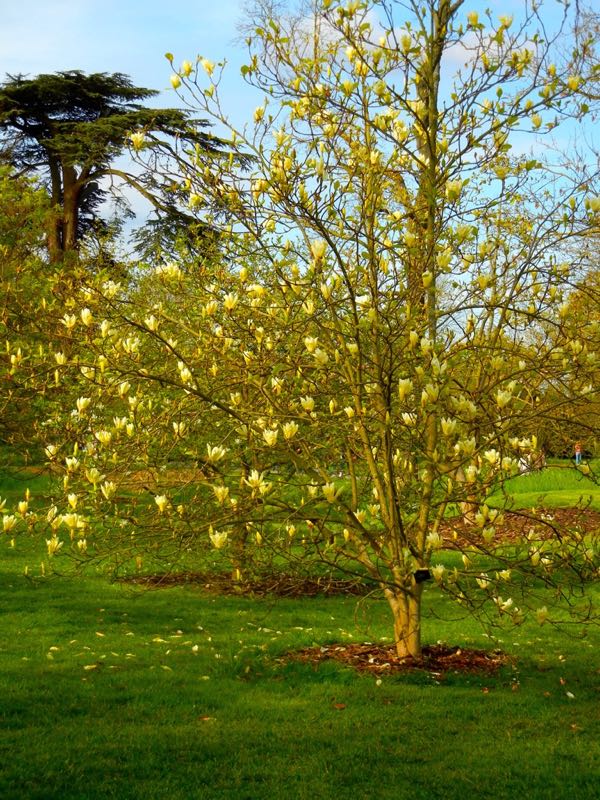

to 9 m.) tall ‘Ivory Chalice,’ which is similar to ‘Elizabeth’ ‘Yellow Lantern,’ with creamy yellow blooms at 25 feet (7.6 m. Common name: A bushy deciduous large shrub or tree that produces large cup-shaped flowers in Spring. These include: ‘Elizabeth,’ with ivory-yellow flowers at 15-30 feet (4.5 m. The cup shaped blossoms have no hint of green. The most common cultivars are hybrids, a cross between cucumber tree and a different magnolia species, and are smaller. All Magnolia flower on the previous season's growth so a hard prune will remove all the flowers. MAGNOLIA x ‘Yellow Lantern’ A upright, single stem tree with large buds opening to consistent lemon-yellow flowers. A variety chosen to suit its position shouldn't need much pruning, best to remove only dead or dangling branches. Planting: Choose a spot which is away from a frost pocket and is sheltered from. Soil: Prefer moist well drained humus rich, slightly acid soil. Large waxy light yellow-cream cup shaped flowers late April-May.

Magnolia make great feature trees adding spring colour to the garden and rich green leaves during summer. Hybridisation means that there are lots of colours to choose from most of varying shades of cream, yellow, pink, mauve and purple. The shape vary depending on the hybrid and can be globlet-like, saucer and/or cupped shaped and star shaped. The showy flowers are quite wonderful, rich in colour, solitary and simple in shape. These are all deciduous, they loose their leaves in winter and flower in early spring before the leaves emerge. There vary in size from large trees ( Magnolia Diva that can grow to 20m tall and 10m wide) to medium size shrubs ( Magnolia x loebneri Leonard Messel 8m tall to 6m wide. Lightly fragrant, tulip-shaped, creamy yellow flowers bear light pink tinges at the base. One member has or wants this plant for trade. This particular variety is an interspecific hybrid.There are many hundreds of Magnolia hybrids. ‘Yellow Lantern’ grows as an upright, single-trunked, pyramidal to oval tree that matures to 25-30’ tall. Magnolia 'Yellow Lantern' Magnolia 0 more photos VIEW GALLERY One vendor has this plant for sale. Consider applying a thick mulch around the root zone in winter to protect it in exposed locations or colder microclimates.
MAGNOLIA YELLOW LANTERN TREE PROFESSIONAL
It is quite intolerant of urban pollution, therefore inner city or urban streetside plantings are best avoided. Image Magnolia (Magnolia Yellow Lantern) - 638161 - Professional images of plants and gardens for use in magazines, books, calendars, brochures and other. It is not particular as to soil type, but has a definite preference for acidic soils. The large flower buds are tomentose, opening. Yellow Lantern is an upright, single-stemmed tree which is fertile. It requires an evenly moist well-drained soil for optimal growth, but will die in standing water. acuminata var.subcordata as the seed parent.
MAGNOLIA YELLOW LANTERN TREE FULL
This tree does best in full sun to partial shade. It grows at a medium rate, and under ideal conditions can be expected to live for 50 years or more. It has a low canopy with a typical clearance of 3 feet from the ground, and is suitable for planting under power lines. Yellow Lantern Magnolia will grow to be about 20 feet tall at maturity, with a spread of 15 feet. Yellow Lantern Magnolia is recommended for the following landscape applications Magnolia Yellow Lantern Magnolia has very large lemon-yellow flowers which appear in late spring and last for a long time.

It has no significant negative characteristics. This is a relatively low maintenance tree, and should only be pruned after flowering to avoid removing any of the current season's flowers. Its relatively coarse texture can be used to stand it apart from other landscape plants with finer foliage. Yellow Lantern Magnolia is a deciduous tree with a strong central leader and an upright spreading habit of growth. The large pointy leaves turn coppery-bronze in fall.

Yellow Lantern Magnolia is smothered in stunning fragrant lemon yellow cup-shaped flowers with tan overtones held atop the branches in mid spring before the leaves. A hybrid magnolia which is bathed in large creamy yellow flowers in spring upright habit of growth with a central leader and large, coarse leaves an excellent specimen tree, best located where its flowers can be appreciated close-up


 0 kommentar(er)
0 kommentar(er)
